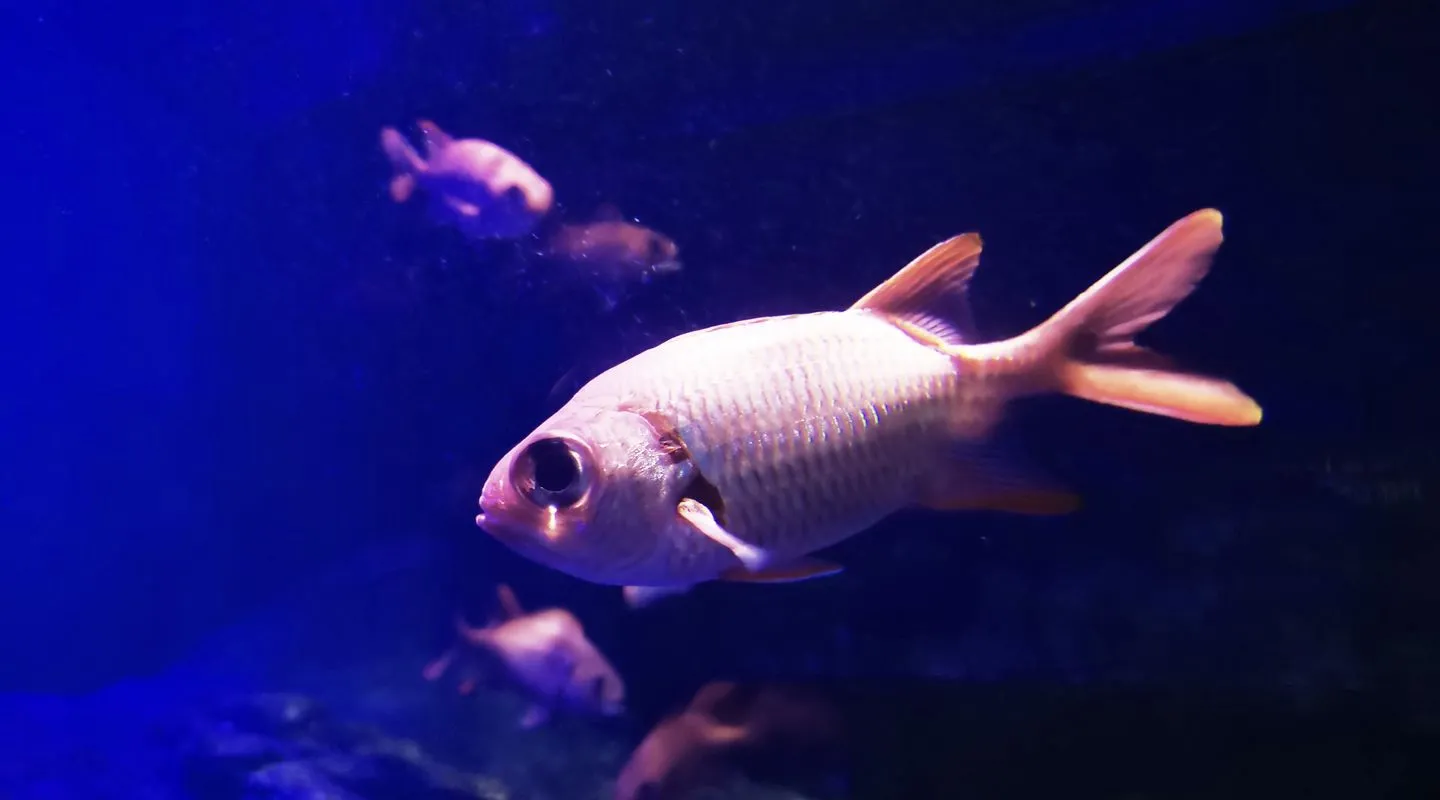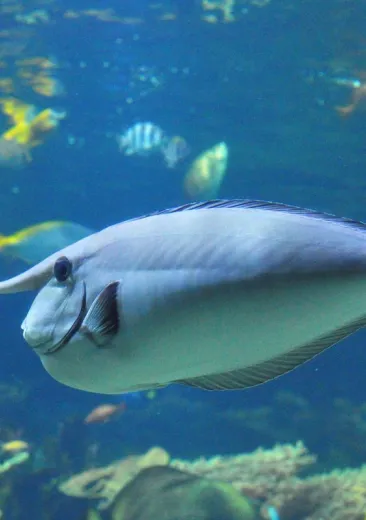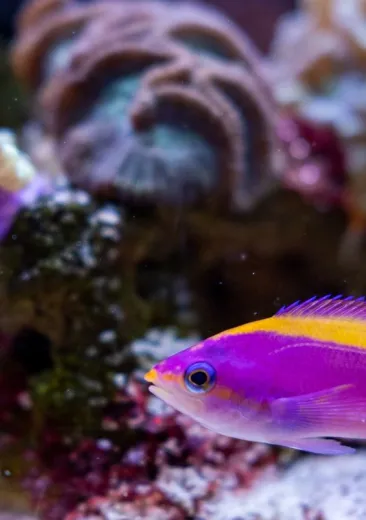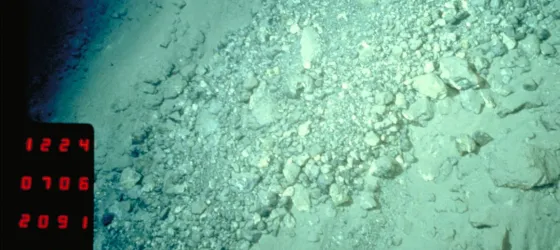The soldierfish have been at Nausicaa since June 2011. Little by little, the carers have gained the trust of the soldierfish and have succeeded in getting them to come out of their hiding place during the day.

Identity card
Pinecone Soldierfish
- Scientific name:
- Myripristis murdjan
- Family:
- Myripristinae
- Class:
- Actinopterygii
- Phylum:
- Chordata
- Year of description:
- Forsskål, 1775
- IUCN Status:
- Least Concern
- Distribution:
-
Indo-Pacific Ocean
- Habitat:
-
In coral reefs, at a depth of 1 to 50 metres.
- Size:
18 cm on average up to a maximum length of 60 cm.
- Diet:
-
Large zooplankton and small benthic invertebrates.








